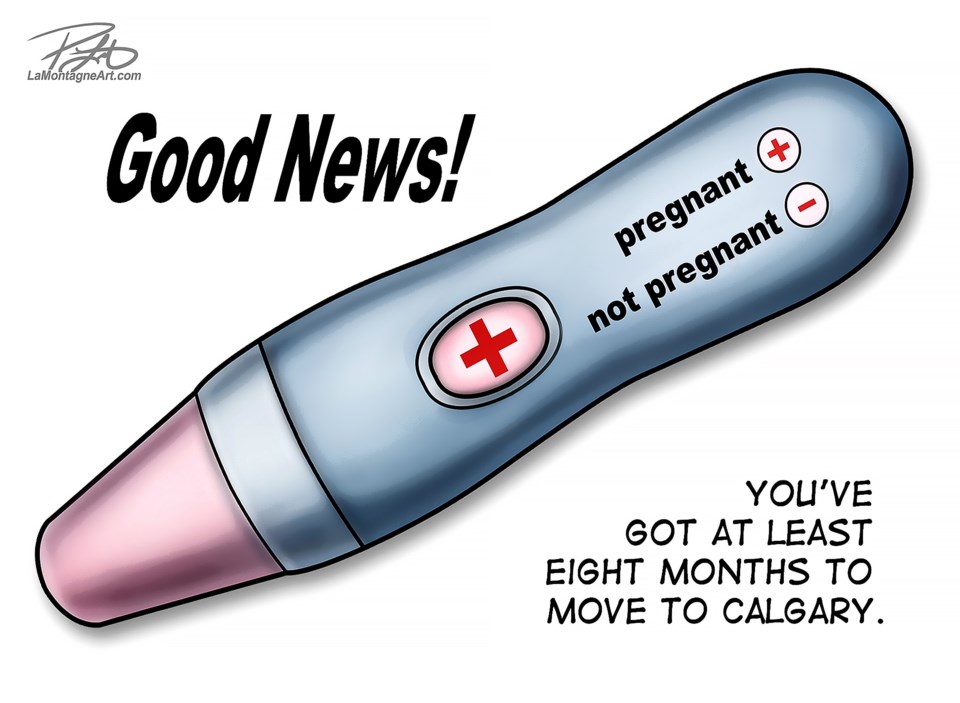The news of Canmore General Hospital having to shutter its operating room on weekends because of a staffing shortage is the latest wrench tossed at the province’s beleaguered healthcare system.
Not only is housing at a premium in the Bow Valley, but so too is the growing difficulty in attaining medical care. It’s through no fault of medical professionals – who are often overworked and on the edge of burnout to keep the system at the level it’s at – but an example of another crumbling system unmaintained to adequate levels.
While warning signs have been going off for decades in Canadian healthcare, Band-Aids, stitches and leeches have been applied when significant surgery is needed.
The temporary weekend closing of the Canmore’s operating room means obstetrical services hit pause on weekends, leaving expecting Bow Valley mothers forced to go to Foothills Medical Centre in Calgary.
For soon-to-be families in Banff, Canmore and the MD of Bighorn, they’ll be looking at more than an hour race down the Trans-Canada Highway to welcome the newest family member if on weekends.
Across the province, hospitals have been faced with difficult decisions related to staffing and capacity challenges.
The Red Deer Regional Hospital – which is the lone referral centre for about 500,000 people – was so overwhelmed with patients last month when its emergency department had to divert patients elsewhere.
Sylvan Lake’s urgent care centre recently reduced its hours due to a doctor shortage, Tofield Health Centre has had its emergency department closed overnight for several months now, and Ponoka Hospital and Care Centre and Beaverlodge Hospital also temporarily closed their emergency departments for several days.
Hospitals and healthcare centres across Alberta have also become heavily reliant on contract nurses, which has served to slowly erode the public workforce. A new report from CBC Edmonton shows Alberta Health Services has gone from using two contract agencies in 2016-17 when $180,000 was spent to 10 last year and $5.1 million doled out.
The situation is no one person’s or one level of government’s fault. Canada’s healthcare system has been in a state of disrepair and held together by duct tape and crazy glue for decades.
The federal and provincial governments have been at loggerheads over a new funding agreement, with $196.1 billion – including $46.2 billion in new spending – over 10 years pitched by the federal government Tuesday (Feb. 7).
The premiers wanted more than $300 billion in spending over the next decade, highlighting the gap between the two sides.
Of course, Ottawa has asked provincial and territorial governments to report on howthe money is spent and the results, similar to a parent wanting to see how their child spends an allowance.
The provinces and territories want the money with no strings attached, with Canadians caught in the middle of the very public negotiation spread out over the last two years.
Throwing money at a problem isn’t the only answer, but it’s a key start.
It was only in November that it was announced a revitalization project – expected to cost about $4.4 million – would launch for Canmore General Hospital’s emergency department.
The work will bring vital upgrades in a new private family quiet room and triage space, an ambulatory care area and new nurse stations to improve the space for both staff and patients.
With roughly 14,500 people using the emergency department each year, the upgrades are both key and important.
The move to expand CT scan hours at Canmore General Hospital has also aided in local service, while also helping keep ambulances in the region as opposed to transporting patients for the scans in Calgary.
Those are just examples that while money is key, it’s not the only answer.
A 10-year deal was struck in 2004 with the Paul Martin federal government and premiers to strengthen and fix a broken system, outlined in a 10-point plan. Since then, the issues have only been exacerbated, with a 2012 Senate committee report noting systemic changes from the 2004 agreement had stalled.
As our population continues to both grow and age, there’s little room for do-overs or misses in planning.
The coming weeks, months and years are essential to what the state of Canadian healthcare will be to meet future needs.




